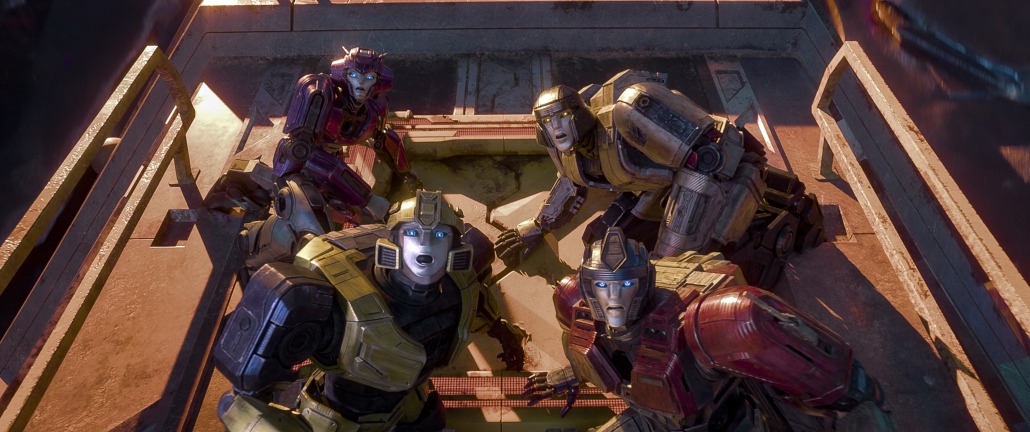BOARDROOMS & BLOCKBUSTERS
Animated epics face an uphill battle
With “The Lord of the Rings: The War of the Rohirrim” approaching, we must examine the box-office viability of animated adventures.
With “The Lord of the Rings: The War of the Rohirrim” approaching, we must examine the box-office viability of animated adventures.


Animated movies are for kids — at least, that’s what the 94th Academy Awards wanted you to believe. Jokes throughout the evening — including by those presenting the Best Animated Feature award — caused a righteous uproar across the animation industry. But if you look at the box office, those who mock animated movies as “just for kids” have a point.
A quick glance at the highest-grossing animated films ever made reveals dozens of films aimed primarily at children. This list notably does not feature movies aimed at adults like “Flee” (2021), an animated documentary about an Afghan refugee that was nominated for three Oscars.
“Flee,” or a film like it, almost certainly wouldn’t gross $1 billion at the box office even if it was given the chance to. But action-driven animated movies aimed at a slightly older audience — a rare type of blockbuster I call an “animated epic” — are struggling to break through, despite their seemingly wide appeal.
In yet another attempt to defy this trend, the anime franchise film “The Lord of the Rings: The War of the Rohirrim” will release next week. It’s a movie clearly aimed at teens and adults, and a successful box-office performance would be extremely promising for the future of action-packed animated features in theaters.
But recent history isn’t pretty for films like these. In particular, let’s look at perhaps the most overlooked blockbuster of the year: “Transformers One.”
Released by Paramount on Sept. 20, “Transformers One” currently sits at a “Fresh” 89% on Rotten Tomatoes and an audience rating of 98% to boot. It’s an excellent, well-animated prequel that convincingly justifies its own existence and has a wide appeal demographically.
Despite this, “Transformers One” currently sits in 29th place among this year’s blockbusters in terms of box-office totals. It raked in a relatively paltry $129 million behind a slew of movies that were considered flops, including “Red One” and “Furiosa: A Mad Max Saga.”
So, what happened? While you could blame a variety of factors, such as the confusing name and a tired franchise, it’s obvious that the perception around “Transformers One” as a movie made “just for kids” doomed it.
The first trailer for the film, edited carefully to show tons of age-appropriate comedy, signaled to many that “Transformers One” was a film for kids. The movie was originally set to open right next to DreamWorks Animation’s “The Wild Robot,” but Universal and DreamWorks pushed that film’s release back a week to avoid perceived “competition.”
The result was all too familiar: “Beetlejuice Beetlejuice,” another film aimed at younger audiences, beat out “Transformers One” in a crowded market for “family” films, and then “The Wild Robot” destroyed both movies the week it came out.
But animated epics are in no way doomed. One series in particular has been an inspiring exception, blowing the market wide open for these stories to succeed at the box office.
Sony Pictures Animation’s “Spider-Verse” films have become a cultural force. Even in an incredibly crowded year for superhero movies and animated flicks, “Spider-Man: Into The Spider-Verse” (2018) rode its intelligent marketing and universally glowing reception to a respectable $375.5 million at the box office.
Five years later, “Spider-Man: Across The Spider-Verse” (2023) shattered expectations with a staggering $690.5 million haul at the box office. The only conventional action movies that made more were “Fast X” (2023) and “Guardians of the Galaxy Vol. 3” (2023). Both of these movies still appealed to kids and families, but their appeal skewed toward general audiences.
“Across The Spider-Verse” chose to market itself as a big-budget superhero blockbuster instead of another animated kiddie flick, and in doing so became a sensation. So why can’t “The Lord of the Rings: The War of the Rohirrim” do the same?
They’re certainly trying. “The War of the Rohirrim” is much bolder than “Transformers One” or even “Across the Spider-Verse.” Sitting at a PG-13 rating and a runtime of over two hours, this is the most unrestrained animated epic in recent memory.
The marketing is also leaning hard into Peter Jackson’s return to “The Lord of the Rings” franchise as this film’s executive producer, positioning itself as the animated successor to his critically acclaimed epics.
But “The War of the Rohirrim” is also hampering its own chances — and not just with its clunky title. This is an attempt to make a movie just for fanboys, specifically teens and adults, in a franchise that has seen recent failures in both gaming and television.
Its release date of choice, Dec. 13, is also extremely awkward. “The War of the Rohirrim” releases right before a pair of kiddie action pictures with animated elements, “Sonic the Hedgehog 3” and “Mufasa: The Lion King” — a bigger problem when you consider this film isn’t really trying to appeal to kids at all. Teens and adults looking for edgier fare could look to “Kraven The Hunter” or “Y2K,” and “Gladiator II,” which released in late November, will still be taking a chunk from that audience.
“The Lord of the Rings: The War of the Rohirrim” is a risky bet that’s also quite exciting. A big-budget anime film attempting to follow directly in Peter Jackson’s footsteps — which has also deliberately chosen not to appeal to kids — is a wild pitch in modern Hollywood.
Animated epics do have an audience, but you have to get that audience to the theater. While it would be great if this movie could make that happen, I’m not counting on it.
Sammy Bovitz is a sophomore writing about the business of film. His column, “Boardrooms & Blockbusters,” runs every other Thursday.
We are the only independent newspaper here at USC, run at every level by students. That means we aren’t tied down by any other interests but those of readers like you: the students, faculty, staff and South Central residents that together make up the USC community.
Independence is a double-edged sword: We have a unique lens into the University’s actions and policies, and can hold powerful figures accountable when others cannot. But that also means our budget is severely limited. We’re already spread thin as we compensate the writers, photographers, artists, designers and editors whose incredible work you see in our daily paper; as we work to revamp and expand our digital presence, we now have additional staff making podcasts, videos, webpages, our first ever magazine and social media content, who are at risk of being unable to receive the support they deserve.
We are therefore indebted to readers like you, who, by supporting us, help keep our paper daily (we are the only remaining college paper on the West Coast that prints every single weekday), independent, free and widely accessible.
Please consider supporting us. Even $1 goes a long way in supporting our work; if you are able, you can also support us with monthly, or even annual, donations. Thank you.
This site uses cookies. By continuing to browse the site, you are agreeing to our use of cookies.
Accept settingsDo Not AcceptWe may request cookies to be set on your device. We use cookies to let us know when you visit our websites, how you interact with us, to enrich your user experience, and to customize your relationship with our website.
Click on the different category headings to find out more. You can also change some of your preferences. Note that blocking some types of cookies may impact your experience on our websites and the services we are able to offer.
These cookies are strictly necessary to provide you with services available through our website and to use some of its features.
Because these cookies are strictly necessary to deliver the website, refusing them will have impact how our site functions. You always can block or delete cookies by changing your browser settings and force blocking all cookies on this website. But this will always prompt you to accept/refuse cookies when revisiting our site.
We fully respect if you want to refuse cookies but to avoid asking you again and again kindly allow us to store a cookie for that. You are free to opt out any time or opt in for other cookies to get a better experience. If you refuse cookies we will remove all set cookies in our domain.
We provide you with a list of stored cookies on your computer in our domain so you can check what we stored. Due to security reasons we are not able to show or modify cookies from other domains. You can check these in your browser security settings.
These cookies collect information that is used either in aggregate form to help us understand how our website is being used or how effective our marketing campaigns are, or to help us customize our website and application for you in order to enhance your experience.
If you do not want that we track your visit to our site you can disable tracking in your browser here:
We also use different external services like Google Webfonts, Google Maps, and external Video providers. Since these providers may collect personal data like your IP address we allow you to block them here. Please be aware that this might heavily reduce the functionality and appearance of our site. Changes will take effect once you reload the page.
Google Webfont Settings:
Google Map Settings:
Google reCaptcha Settings:
Vimeo and Youtube video embeds:
The following cookies are also needed - You can choose if you want to allow them:
